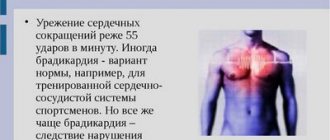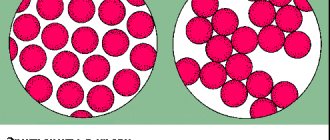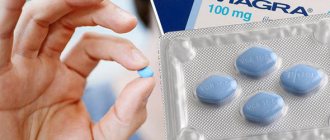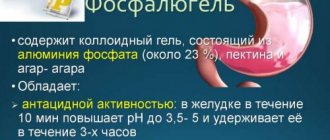Headaches and toothaches are the most common ailments.
Such pain is very difficult to endure, so many decide to fight it with the help of various medications.
The range of medications for headaches is very wide, but few people know that pain can be caused by different reasons and they need to be treated differently.
The most common option that people use to get rid of headaches is Citramon. But today there are several versions of this drug in pharmacies, and in this article we will analyze their main differences.
Citramon
For headaches, people most often resort to this medicine. Its effectiveness has been confirmed by many years of experience in use, and the effect of the drug extends not only to headaches. It can be used for migraines, dental pain, various neuralgic, muscle and joint pains.
Citramon has this effect due to its composition:
- The main active ingredient is acetylsalicylic acid, which is often called aspirin. This substance primarily helps reduce fever and reduce inflammation, easing pain, especially if it occurs due to inflammatory processes.
- It also contains paracetamol, which also helps reduce fever and is also an analgesic. The anti-inflammatory effect of this substance is weak.
- Caffeine is included in Citramon in small quantities. It is not enough to stimulate the central nervous system, but it is quite enough to bring vascular tone to normal and speed up blood flow.
The composition also includes excipients that affect the structure of the drug and its taste.
Don't tolerate high blood pressure
Now hypertension can be cured by restoring blood vessels...
>
What do Citramon tablets help with?
The main purpose of the drug is to relieve moderate and mild pain in the presence of concomitant diseases:
- ARVI;
- flu;
- general malaise;
- febrile syndrome;
- neuralgia;
- arthralgia;
- algodysmenorrhea;
- migraine;
- myalgia;
The drug is used to treat headaches, muscle pain, dental pain, and joint pain. "Citramon" is effective in relieving any pain that is associated with inflammatory processes. It contains several active components that mutually enhance each other's actions.
Citramon P
If you look for analogues of Citramon in pharmacies, then the first thing they offer is this medicine. In fact, now this drug is identical in composition to regular Citramon. The letter P in the name appeared when pharmacists replaced phenacetin with paracetamol. Previously, phenacetin was one of the main active ingredients. They replaced it because it had many side effects.
In its action it is similar to Citramon, lowering the temperature and relieving pain, it also has an anti-inflammatory effect and acts as a psychostimulant. And the spectrum of action of Citramon P is similar to regular Citramon.
Side effects
In case of overdose, long-term use, chronic diseases, as well as individual intolerance to the components, side effects are possible:
- anorexia;
- nausea;
- bleeding of the gastrointestinal tract;
- the appearance of ulcers on the mucous membranes of the gastrointestinal tract;
- liver failure;
- hypersensitivity;
- nephrotic syndrome;
- kidney failure;
- anemia;
- fatty hepatosis in acute form;
- complications associated with heart failure;
- sleep disorders, insomnia;
- headaches;
- tinnitus;
- dizziness;
- increased anxiety;
- heart rhythm disturbances;
- high blood pressure;
- psychological dependence (only in case of long-term use of high doses).
Similarities of drugs
The unconditional similarity of all drugs is their composition. In all of them, the content of active ingredients is present in the following concentration:
- contains the most aspirin – 0.24 g;
- also quite a lot of paracetamol - 0.18 g;
- and very little caffeine – 0.03 g.
It is this combination of these ingredients that allows you to relieve pain, relieve inflammation, and also have a slight psychostimulating effect.
All medications are available in the form of light brown tablets. They have a characteristic smell of cocoa and are heterogeneous in color (there are inclusions of a darker color).
Cases of overdose
In small quantities, an overdose leads to ringing in the ears, nausea, vomiting, dizziness, and pale skin. In case of severe overdose, more serious disorders are observed:
- breathing problems;
- circulatory disorders;
- increased anxiety;
- feeling dazed;
- headache;
- nausea;
- bleeding;
- sweating;
- fatigue, increased drowsiness;
- convulsions;
- extremely rarely - coma.
In these cases, you must immediately stop taking the drug and its analogues with the same active ingredients. If the symptoms are severe, you will need to seek emergency medical help.
Doctors' opinion
The main task of all 4 types of paracetamol is to relieve pain, reduce fever and relieve inflammation.
From individual recommendations, it can be noted that if a patient has increased stomach acidity, then it is better for him to take Citramon Ultra in order to protect the stomach from the negative effects of aspirin.
There are also a number of general contraindications that are best taken into account when choosing a medicine:
- hypersensitivity to individual components;
- ulcers and gastritis in the acute phase;
- bleeding in the gastrointestinal tract;
- severe coronary heart disease;
- arterial hypertension of a pronounced nature;
- other contraindications that the doctor may warn you about.
Ignoring these recommendations can cause serious harm to the patient's health.
Contraindications for use
Restrictions associated with the use of the product contain a fairly large list of disorders and diseases:
- nasal polyposis;
- bronchial asthma;
- hypersensitivity to one or more components;
- bleeding of the gastrointestinal tract;
- diathesis of hemorrhagic type;
- erosion, ulcer of the gastrointestinal tract (in the acute stage);
- portal hypertension"
- severe course of coronary heart disease;
- hemophilia;
- renal failure;
- increased nervous excitability;
- kidney failure;
- sleep problems;
- bleeding during operations;
- severe hypertension;
- glaucoma;
- simultaneous use of anticoagulant drugs;
- aortic aneurysm;
- pregnancy period (especially during the 1st and 3rd trimesters);
- feeding period (any stage);
- children up to 15 years old inclusive.
There are also relative contraindications in which Citramon should be taken with caution. These are liver dysfunctions, as well as gout.
Instructions for use CITRAMONUM-BORIMED
Symptoms.
Symptoms of paracetamol overdose. Liver damage is possible in adults who took 10 g or more of paracetamol, and in children who took the drug more than 150 mg/kg body weight. In the first 24 hours:
- pallor, nausea, vomiting, anorexia and headache, hepatonecrosis, increased activity of “liver” transaminases, increased prothrombin index. Liver damage may appear 12-48 hours after taking excess doses of the drug. Impaired glucose metabolism and metabolic acidosis may occur. In severe poisoning, liver failure can lead to encephalopathy, coma and death. Acute renal failure with acute tubular necrosis can develop even in the absence of severe kidney damage. Cardiac arrhythmia was also noted. With long-term use of high doses, aplastic anemia, thrombocytopenia, pancytopenia, agranulocytosis, neutropenia, leukopenia are possible.
Symptoms of caffeine overdose. Large doses of caffeine can cause pain in the epigastric region, vomiting, diuresis, rapid breathing, extrasystole, tachycardia or cardiac arrhythmia, and affect the central nervous system (dizziness, insomnia, nervous agitation, irritability, state of passion, anxiety, tremor, convulsions).
Symptoms of an overdose of acetylsalicylic acid. In case of an overdose of salicylates, chronic intoxication resulting from long-term therapy is possible (use of the drug more than 100 mg/kg/day for more than 2 days can lead to toxic effects), as well as acute intoxication, the causes of which may be accidental use by children or an unintentional overdose.
Chronic poisoning with salicylates can be hidden, since its symptoms are nonspecific. Moderate chronic intoxication caused by salicylates occurs, as a rule, only after repeated doses of large doses.
Symptoms Impaired balance, dizziness, ringing in the ears, deafness, increased sweating, nausea and vomiting, headache, confusion. These symptoms can be controlled by reducing the dose. Tinnitus can occur when the concentration of salicylates in the blood plasma is more than 150-300 mcg/ml. Serious adverse reactions occur when the concentration of salicylates in the blood plasma is more than 300 mcg/ml. Acute intoxication is indicated by a pronounced change in the acid-base balance, which may differ depending on the age and severity of intoxication. The severity of the condition cannot be determined solely on the basis of the concentration of salicylates in the blood plasma.
Treatment:
discontinuation of the drug, gastric lavage with activated charcoal and administration of saline laxatives (magnesium sulfate) to prevent absorption of the drug in the stomach and intestines. Introduction of alkalizing agents to maintain urine pH values at 7.5-8.0. When the level of salicylates in plasma exceeds 300 mg/l (2.2 mmol/l) in children and 500 mg/l (3.6 mmol/l) in adults, forced alkaline diuresis is indicated (provided by intravenous infusion of sodium bicarbonate 88 mEq/l and 5% glucose at a rate of 10-15 ml/kg/h with furosemide 40-60 mg). The volume of circulating blood is restored and the acid-base state is corrected. In case of cerebral edema, artificial ventilation of the lungs with an oxygen-enriched mixture in positive end-expiratory pressure mode is indicated. For cerebral edema, hyperventilation is performed in combination with the administration of osmotic diuretics.
In the presence of liver damage, a specific antidote of paracetamol, N-acetylcysteine, is administered. A 20% solution of N-acetylcysteine is used intravenously and orally:
- first dose 140 mg/kg (0.7 ml/kg), then 70 mg/kg (0.35 ml/kg). A total of 17 doses are administered. The most effective treatment is started in the first 10 hours after the development of intoxication. If more than 36 hours have passed since intoxication, treatment is ineffective.
If the prothrombin index increases by more than 1.5, vitamin K1 (phytomenadione) 1-10 mg is used; if the prothrombin index increases to more than 3.0, it is necessary to begin infusion of native plasma or a concentrate of coagulation factors (1-2 units).
When treating intoxication, hemodialysis is contraindicated. It is unacceptable to use antihistamines and glucocorticosteroids. It is not recommended to use acetazolamide to alkalinize urine in the treatment of intoxication due to the possibility of developing acidemia and increasing the toxic effect of salicylate on the patient's body.






